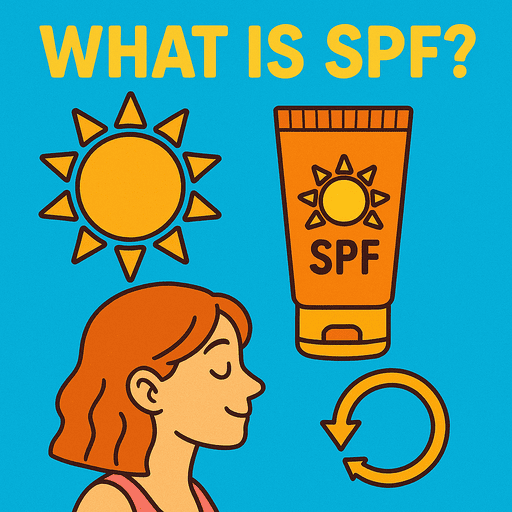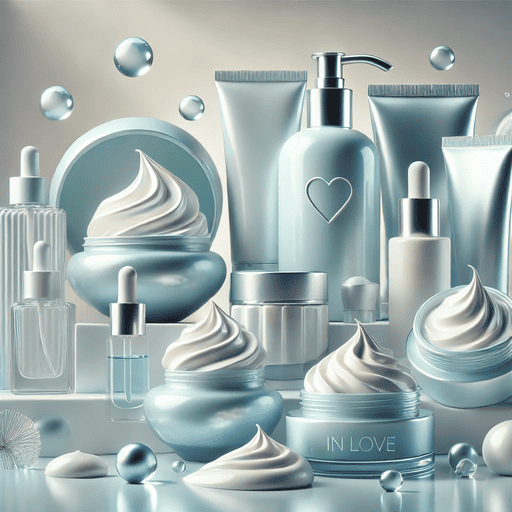Understanding SPF: What It Means and How to Choose the Right Sunscreen

SPF, or Sun Protection Factor, measures how effectively a sunscreen shields your skin from harmful ultraviolet B (UVB) rays, which are the main cause of sunburn. For example, an SPF 30 sunscreen theoretically lets you stay in the sun 30 times longer without burning than if you were wearing no protection. However, many factors can influence this estimate, including your skin type, intensity of sun exposure, and how well you apply and reapply sunscreen.
What Is SPF?
SPF stands for Sun Protection Factor. It's a measure of how well a sunscreen protects your skin from ultraviolet B (UVB) rays, which are primarily responsible for sunburn and contribute to skin cancer risk. The SPF number indicates the level of protection a sunscreen offers.
For instance, if your skin would normally burn after 10 minutes of sun exposure, applying an SPF 30 sunscreen would allow you to stay in the sun for 30 times longer—approximately 300 minutes—without burning. However, this is a simplified explanation, and several factors can affect this duration.
Understanding the SPF Number
The SPF number reflects the amount of UV radiation required to cause sunburn on protected skin relative to unprotected skin. Here's a breakdown of how different SPF levels compare:
-
SPF 15: Blocks about 93% of UVB rays.
-
SPF 30: Blocks about 97% of UVB rays.
-
SPF 50: Blocks about 98% of UVB rays.
-
SPF 100: Blocks about 99% of UVB rays.
While higher SPF numbers offer slightly more protection, the difference becomes marginal beyond SPF 30. For example, SPF 50 blocks only 1% more UVB rays than SPF 30. Therefore, SPF 30 to 50 is generally sufficient for most people.
SPF and Time: A Common Misconception
Many believe SPF directly correlates to time in the sun without burning, but this is an oversimplification. While SPF does suggest increased protection, real-world effectiveness depends on correct and consistent use. Weather, sweat, swimming, and skin tone all play a role. For instance, SPF 15 filters out about 93% of UVB rays, SPF 30 blocks roughly 97%, and SPF 50 blocks around 98%. Beyond SPF 30, the added protection becomes minimal.
Several factors influence how long you can stay in the sun without burning, including:
-
Skin type: Lighter skin burns more quickly than darker skin.
-
Sun intensity: The sun's rays are stronger between 10 a.m. and 4 p.m.
-
Geographic location: Closer proximity to the equator means stronger UV rays.
-
Altitude: Higher elevations receive more intense UV radiation.
-
Weather conditions: Cloud cover can reduce UV exposure, but not eliminate it.
Additionally, activities like swimming, sweating, or towel-drying can remove sunscreen, reducing its effectiveness. Therefore, it's crucial to reapply sunscreen every two hours, or more frequently if you're swimming or sweating.
Broad-Spectrum Protection: UVA and UVB Rays
SPF only accounts for UVB rays, but UVA rays also damage the skin, contributing to aging and increasing skin cancer risk. Broad-spectrum sunscreens provide protection from both types of ultraviolet radiation and are essential for full coverage.
Choosing the Right SPF for Your Skin
Skin type and daily activities matter when selecting sunscreen. Lighter skin tones often require higher SPF, while darker complexions may be sufficiently protected with SPF 15 or 30. When active or outdoors, opt for a broad-spectrum, water-resistant sunscreen with at least SPF 30.
Here are some general guidelines:
-
Fair skin: SPF 30 or higher.
-
Medium skin: SPF 15 to 30.
-
Dark skin: SPF 15 or higher.
If you're engaging in outdoor activities like swimming or exercising, opt for a water-resistant sunscreen with at least SPF 30. Remember to reapply every two hours or after swimming or sweating.
Application Tips for Maximum Protection
To get the most from your sunscreen:
-
Apply generously—about one ounce (roughly a shot glass full) for the whole body.
-
Use it 15 minutes before going outdoors.
-
Reapply every two hours, especially after swimming, sweating, or toweling off.
-
Don't forget commonly missed spots like ears, feet, and the back of your neck.
Additional Sun Protection Measures
While sunscreen is essential, it's not the only line of defense:
-
Seek shade: Especially during midday hours.
-
Wear protective clothing: Long-sleeved shirts, hats, and sunglasses.
-
Avoid tanning beds: They increase the risk of skin cancer.
Incorporating SPF into Your Daily Routine
Sun protection shouldn't be limited to beach trips. Daily use is important even when indoors or on cloudy days, as UV rays penetrate windows and clouds. Make sunscreen a daily habit as the final step in your skincare routine. Products like moisturizers or foundations with SPF can supplement your protection but shouldn’t replace a dedicated sunscreen.
Morning Routine: Don’t Skip the SPF
In the morning, after cleansing and applying any serums or moisturizers, you should apply a broad-spectrum sunscreen as the final step of your skincare routine—before makeup. Many moisturizers and foundations now include SPF, which is a good start, but they often don’t provide enough protection on their own. Dermatologists recommend using a standalone sunscreen with at least SPF 30 to ensure adequate coverage.
Even if you're just walking from your car to the office or sitting near a window, those small exposures add up over time. Daily sunscreen use has been shown to significantly reduce the risk of developing both melanoma and non-melanoma skin cancers, as well as preventing premature skin aging like wrinkles, sagging, and hyperpigmentation.
Makeup and SPF: Do They Mix?
A common question is whether SPF in makeup is enough. The short answer is: usually not. Most people don't apply enough makeup to achieve the labeled SPF protection, and reapplying makeup throughout the day isn’t as practical.
The solution? Use a dedicated sunscreen underneath your makeup, and consider using SPF powders, setting sprays, or tinted sunscreens for touch-ups throughout the day. These can be applied over makeup without disturbing it, helping you maintain protection without needing a full reapplication.
Nighttime Care
At night, it's important to cleanse your skin thoroughly to remove sunscreen and environmental debris. This allows your skin to breathe and absorb beneficial ingredients from nighttime skincare products.
Final Thoughts
SPF isn't just a number on a bottle—it's a science-backed tool for protecting your skin’s health and appearance. Whether you’re lounging at the beach, running errands, or working indoors near a sunny window, using sunscreen consistently can drastically reduce your risk of skin cancer and visible aging.
Understanding SPF, how it works, and how to use it effectively empowers you to make smarter choices for your skin every single day. Combine it with other forms of sun protection—like seeking shade, wearing protective clothing, and avoiding tanning—and you’ll be taking a comprehensive approach to skincare that pays off in both the short and long term.



Comments